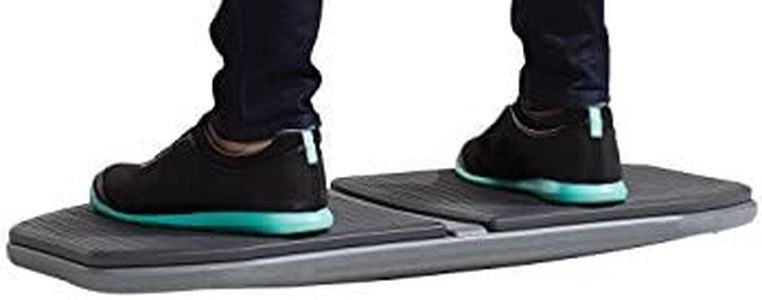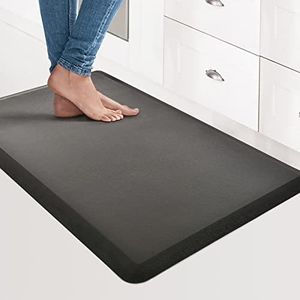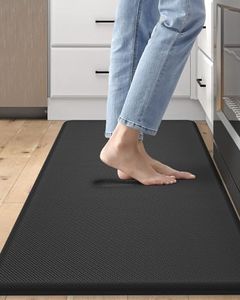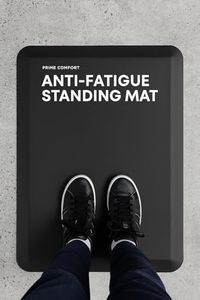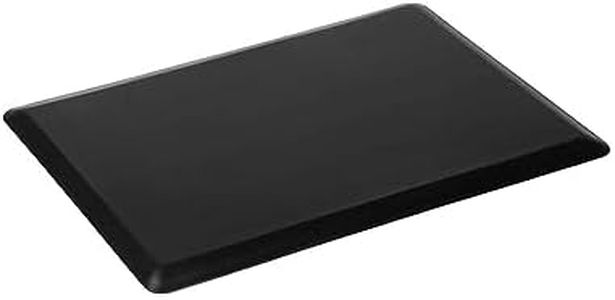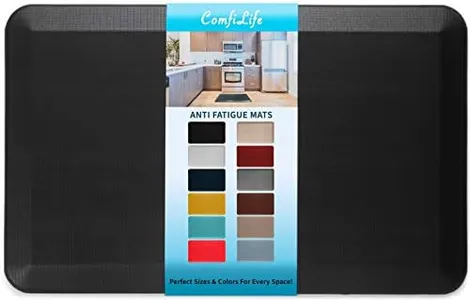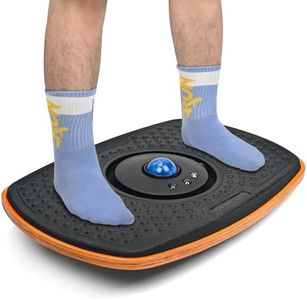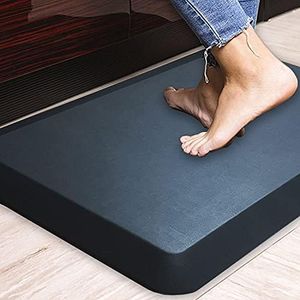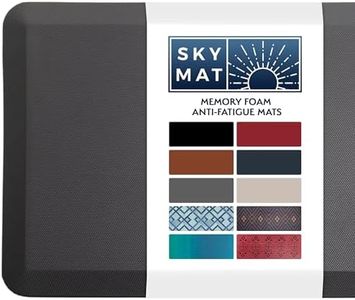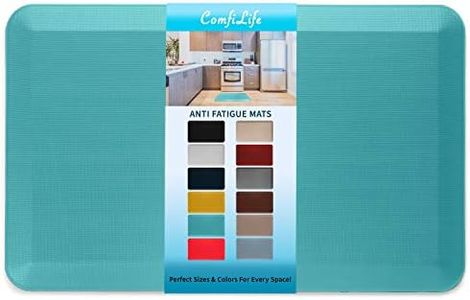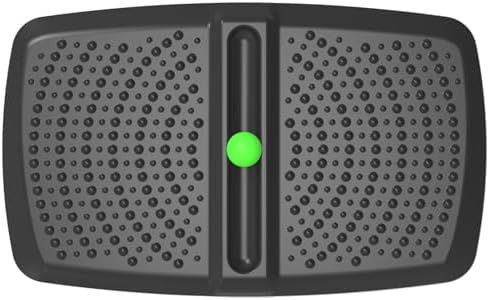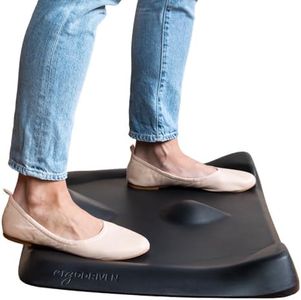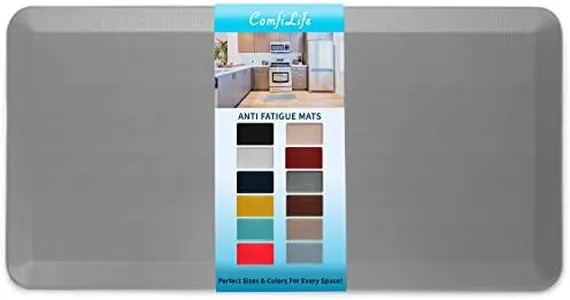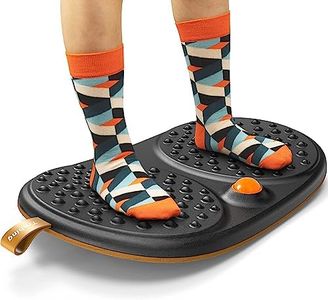We Use CookiesWe use cookies to enhance the security, performance,
functionality and for analytical and promotional activities. By continuing to browse this site you
are agreeing to our privacy policy
10 Best Standing Mat For Work
From leading brands and best sellers available on the web.Buying Guide for the Best Standing Mat For Work
Choosing a standing mat for work can make a big difference in your daily comfort and overall well-being, especially if you spend long hours standing at a desk or workstation. A well-chosen mat helps reduce fatigue, minimizes stress on your feet and legs, and can even improve your posture. Understanding the core features and how they relate to your needs is the key to finding a standing mat that feels great and supports your daily routine.MaterialThe material of a standing mat determines its durability, comfort, and how well it provides cushioning. Most mats are made from foam, gel, or rubber. Foam mats tend to be soft and spongy, making them great for short, lighter-use scenarios, but they can wear out faster. Gel mats offer a balance between softness and support and can be more durable for heavier or longer use. Rubber mats are usually the most durable and supportive but may feel firmer underfoot. Consider how long you'll be standing and your comfort preferences to choose the material best suited for your routine.
ThicknessThe thickness of a standing mat impacts the level of cushioning and support you receive. Thin mats (about 0.5 inches or less) generally offer minimal comfort and work best for short periods or in areas where extra cushioning might cause balance issues. Medium-thickness mats (0.75–1 inch) strike a balance between cushioning and stability, making them a strong choice for the average user standing several hours a day. Thicker mats (over 1 inch) provide maximum softness and comfort, ideal for those who stand all day but may feel too squishy for those who prefer solid footing. Pick a thickness based on how much standing you'll do and which feel you find both supportive and comfortable.
Size and ShapeSize and shape affect both how much area your mat covers and how well it fits into your workspace. Smaller mats are easy to move and fit well in compact areas, but larger mats offer more room to shift your stance and move around. Rectangular mats are the most common, but contoured or irregular shapes can let you stretch or move more naturally. Think about the size of your workstation, how much you move around, and whether the mat will need to fit into a specific space when deciding what size and shape work best for you.
Surface TextureThe surface texture of a standing mat affects both comfort and slip resistance. Smooth mats are easy to clean and move on, but may become slippery if wet. Textured or patterned surfaces provide better grip and can gently massage your feet, adding some extra relief, but may be harder to clean. Consider whether you'll be wearing shoes, socks, or going barefoot, and whether spills or dirt are likely in your workspace to help you decide which texture best matches your environment and preferences.
Non-Slip BaseA mat with a non-slip base stays securely in place on various floor types, such as hardwood, tile, or carpet, which is important for your safety—especially when standing and moving frequently. Some mats feature special non-slip coatings or rubberized bottoms to prevent movement. Consider the type of flooring you have and how much you shift your weight while standing to ensure your mat has the right level of grip and won’t slide around during use.
Ease of CleaningStanding mats in workspaces can accumulate dirt, spills, or wear from shoes, so cleaning should be easy and practical. Some mats are washable or have smooth, wipeable surfaces, while others may need more attention due to deeper textures or seams. Think about how often you’ll need to clean your mat and how simple you want this process to be, especially if your workspace tends to get messy.
